Magnifying Lenses: How to Choose a Magnifier
Properties of Magnifying Lenses
To choose the correct magnifier for the job, first determine what tools are to be used on the job; then determine the size and the character of the subject; and finally, analyze the object's surface character. Then review the following aspects of magnifiers:
Number of Elements:
A single lens is satisfactory for low powers. Higher power magnifiers require two or more lens elements for improved resolution and correction of chromatic or other aberrations.
Working Distance:
The distance from the magnifier to the object viewed is the working distance. This distance is an important consideration with regard to the type of work that must be done under the magnifier. If your work requires the use of tools, a magnifier with a long working distance will allow enough space to both use the tools and comfortably view the object. Small working distance magnifiers with higher powers are preferred for close-up inspection work.
Field of View:
The field of view is the area seen through the magnifier. As power increases, lens diameter and field of view decrease. At 5 power (5X), field of view is about 1.5". At 10 power (10X), it is about 0.5". Usually, it is best to use low power for scanning larger surfaces and high power for small areas.
Eye Relief:
The maximum distance the eye can be from the magnifier and still provide a full field of view. Longer eye reliefs generally provide more comfortable viewing.
Depth of Field:
The distance between the closest and furthest points at which a magnifier in a fixed position stays in focus. The depth of field decreases as power increases.
Coating:
Lens surfaces coated with special anti-reflection coatings will reduce light loss and are particularly useful for low-level light applications.
Magnification:
10" is assumed to be the closest distance the human eye can focus for comfortable vision. An object only 1" from your eye would be 10 times larger, but out of focus. A magnifier's function is to assist your eye in focusing closer. Since a 1" focal length lens brings clear vision down to 1" from the eye, an object at this distance is clearly seen and appears to be 10 times closer than it does when viewed from 10" away. Such a magnifier is commonly called a 10X or 10 power. Using this definition, the magnifying power of a lens can be approximated as follows: MP = 10/FL if the focal length is specified in inches. If the focal length is specified in mm, the formula will be MP=250/FL.
Actual magnifying power will vary slightly, depending upon working distance, eye relief distance and the characteristics of the observer's eye.
Size vs. Power in Magnifiers
A perfect magnifier would be lightweight, have a large diameter, provide a wide viewing area, and offer high, distortion-free magnification. However, incorporating all of these features into one unit is optically impossible. The magnifying power of a lens depends on its focal length (fl). The focal length, in turn, depends on the lens curvature; the greater the curvature, the shorter the focal length and the greater the power. In the design of a simple, inexpensive magnifier, the lens diameter will typically decrease as the curvature increases to provide higher power. Conversely, as the curvature is decreased to lower the power, the diameter generally increases with a resulting increase in viewing area. In addition, distortion generally increases with an increase in curvature. Thus, a magnifier with a large diameter typically offers more viewing area and less power. So, both wide field of view and high magnifying power cannot be incorporated into a single design without elaborate, weighty, high-cost lenses.
Choosing a Magnification and Field of View
Examples of the viewing area using the following magnification powers:
 6X |
 9X |
 12X |
 20X |
Basic Magnifier Optical Systems

Simple Lens:
The simple lens is a single positive lens. Simple lenses are satisfactory for work that requires only low power magnifiers, such as 2X or 3X reading magnifiers. Simple lens magnifiers distort color on the outer fringes of the image and thereby lose sharpness.

Doublet Lens:
The doublet lens is two simple lenses used in conjunction with each other but not cemented together. The doublet produces an image of better quality because it corrects some of the outer image color distortion.

Achromat:
An achromat is a positive simple lens cemented to a negative simple lens. The primary advantage is that it is corrected for two colors and works well at high powers. Most high quality magnifiers use achromats to eliminate color fringing at the edge of objects.

Triplet:
Cementing three lenses together produces a triplet lens. Triplets produce a better quality image, are corrected for three colors, and give little or no image distortion. They are best used for jobs that require a great deal of precision at high magnifying levels.
<h2">Other Magnifying Lens Properties to Consider
Quality of Magnifier Systems
How much you spend on a magnifier should be determined by the application for which it is being used. Buying the least expensive magnifier could lead to unsatisfactory and frustrating results. Any magnifier you buy should be a tool to fit the rigors of the environment in which it will be used. Additionally, it may be unwise to expect the same magnifier to satisfy the requirements of several functions. Below are several factors affecting the quality of the magnifier, as well as the function for which it is best suited.
Flatness of Field
Due to physical laws, the outer part of the image formed by a simple lens may appear out of focus. This is caused by the curvature of the lens. The greater the magnification - and the greater curvature of the lens - the greater the problem. This can be easily overcome by designing a magnifier that has more than one lens. A triplet has a "flat field" which means the entire area of view is in focus and undistorted.
Color Distortion
Because of physical laws, the lens may produce a prism effect giving the image false color fringes known as chromatic aberration. Simple lenses focus various colors at different points. Achromats with two simple lenses cemented together correct this by causing many colors to focus at the same point.
Magnifier Selection Guide
| Type | Power | Advantages | Users and Uses |
|---|---|---|---|
| Comparators | 6X-12X | Equipped with reticles for precision measurement of small parts, angles, holes, diameters, thread size, etc. | Printers, aerial photography, magnetic code users, machinists, printed circuit inspection |
| Loupes | 2X-10X | Worn at the eye or mounted on a spectacle frame for easy hand-held inspection | Watchmakers, jewelers, QC inspectors, toolmakers, instrument makers |
| Linen Testers | 5X-9X | Magnifier with folding stand has grid scale on base for hands-free use | Counting threads in textiles, printing, engraving, circuit boards |
| Transparent Base Magnifiers | 9-12X, with additional 10-15X options | For pinpoint examination, base admits light | Editors, stamp/coin collectors, photographers |
| Direct Measuring Microscopes | 25-100X | Pocket size "microscope" for jobs requiring more than 25X power, reticles available | Extremely versatile for detection of flaws, scratches and imperfections |
Still not sure which type of magnifier would be best for your application, and need some more guidance before buying a magnifying glass? Contact us and an expert will answer your questions.
Simple Magnifier Calculator














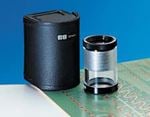
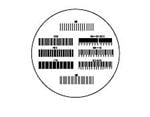
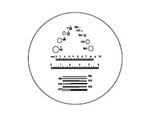
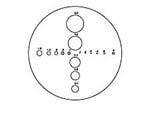
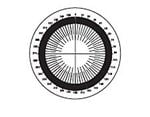

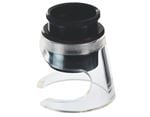

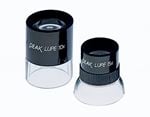
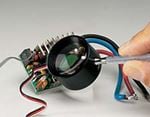
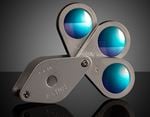
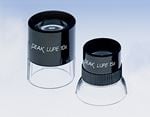

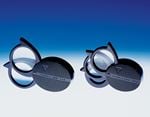

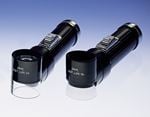
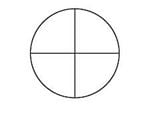
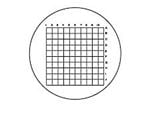
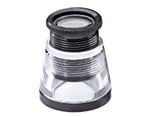
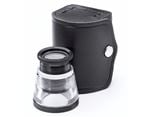
或查看各区域电话
报价工具
只需输入商品编号
Copyright 2023, 爱特蒙特光学(深圳)有限公司。— 广东省深圳市龙华工业东路利金城科技工业园3栋5楼 518109 - 粤ICP备2021068591号